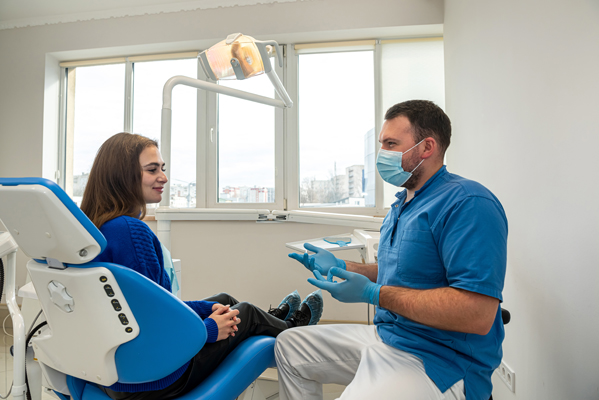 A dental bridge can simplify tooth replacement so patients can restore their smiles. However, many are nervous about getting the bridge because they know that it involves modifying the other teeth near the gap.
A dental bridge can simplify tooth replacement so patients can restore their smiles. However, many are nervous about getting the bridge because they know that it involves modifying the other teeth near the gap.
Fortunately, the dental bridge procedure is quite simple and is usually performed on an outpatient basis. This means you can go home right away. Knowing what to expect can help you feel less nervous!
How the dental bridge procedure works
A dental bridge procedure usually takes around an hour, but there are many types of bridges, each requiring a slightly different approach. In general, though, the process is straightforward, regardless of bridge type.
What is a dental bridge?
A dental bridge is a type of tooth replacement in which a false tooth is held up and supported by the nearby teeth. The dentist must place crowns on the teeth surrounding the gap to accomplish this. The prosthetic is supported by these crowns, taking up the space of the missing tooth and restoring both the smile and the bite.
The dental bridge process
Once a patient arrives for their dental bridge procedure, they will be taken to the dentist’s chair. If they request topical numbing cream, the dentist will provide it at this point to give it time to work.
When it is time for the treatment to begin, the dentist will provide local numbing to keep the patient comfortable while work is done in the area. Then, the dentist will carefully shape the teeth surrounding the gap where a tooth used to be.
As soon as the nearby teeth are ready, the dentist will take a mold of the area. This enables them to create crowns that perfectly fit the modified teeth and cover the gap. It usually takes around a week for the crowns to be fabricated; in the meantime, the dentist will place temporary coverings.
Upon the patient’s return to the office, the new crowns will be ready, and the dentist can place them by removing the temporary coverings. The prosthetic tooth is already attached to these crowns, so installation of the crowns completes the process!
Recovery after a dental bridge
Patients may find that their gums are a little sore for a few hours after the procedure, as the numbing agent and the vibrations in the area can irritate the sensitive gum tissue. Resting for the rest of the day is a great choice.
Otherwise, patients can use their dental bridge right away. They should take care of the restoration the same way that they do all their other teeth: by brushing, flossing, rinsing, and going to regular checkups and cleanings.
Know what to expect during a dental bridge procedure
A dental bridge procedure is nothing to worry about! It is a quick and simple way to replace a missing tooth and restore the smile. Patients can enjoy an improved bite with a bridge that is strong and supported by nearby teeth. Contact our office to schedule your bridge procedure.
Request an appointment or call Sammamish Dental Center at 425-340-3113 for an appointment in our Issaquah office.
Related Posts
A dental bridge is a tooth replacement option that does not require incisions to be made into the gums. However, there are many different types of dental bridges, and finding the perfect one can feel overwhelming. While your dentist will usually recommend what they think is best, it can be helpful to know the available…
A dental bridge is a reliable and effective solution for replacing a single missing tooth. Losing a tooth can impact a smile's functionality and appearance, but this treatment restores those elements with ease. A dental bridge enhances oral health and confidence by filling the gap left by a missing tooth.A dental bridge replaces a missing…
Losing a tooth can affect more than just your smile; it can also impact how you eat, speak, and maintain oral health. Dental bridges are a popular and effective solution for filling gaps left by missing teeth. By understanding the different types of dental bridges, you can work with a general dentist to find the…


